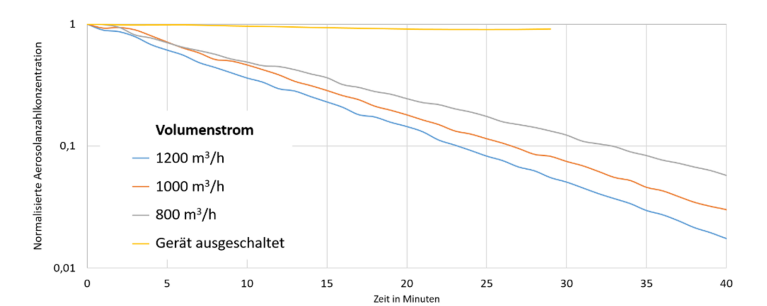Aerosols
Person in charge: Finn Felix Duill
An aerosol describes air with liquid and/or solid particles distributed in it (Fig. 1). The aerosol particles are very small (< 5 µm) and can therefore remain in the air for a long time without significantly settling. Since these aerosol particles can contain viruses, for example, they play an important role in the transmission of diseases. So-called atmospheric aerosols are also relevant and the subject of investigations in climate research.

Fig. 1: Definition of aerosol (source: GAeF eV)
The role of aerosols in the corona pandemic
In the course of the corona pandemic, aerosols have come into focus, as they can cause infection from a distance of > 1.5 m, especially indoors, through virus-laden aerosol particles in the air. Especially indoors, where aerosol particles exhaled by infectious people pose a risk of infection, it is important to separate these particles from the room. Ventilation and air conditioning (HVAC) systems that draw fresh air from outside into a room and thus exchange the air inside are rarely installed in public buildings such as schools (approx. 10%). In these cases, window ventilation remains the only measure to reduce the concentration of exhaled aerosol particles in the room.
Mobile room air purifiers to reduce aerosol concentration
For buildings without air conditioning systems, however, mobile room air filters offer the possibility of circulating the room air through particularly effective filters, whereby the viruses are separated on the filters. Demonstrating the effectiveness of these room air purifiers under realistic conditions in schools can therefore make an important contribution to significantly reducing the risk of infection indoors and avoiding superspreading events and is therefore the subject of experimental investigations at the Chair of Technical Thermodynamics at the OvGU.
Figure 2 shows the reduction in aerosol concentration measured after a previous particle entry, with and without an air filter.When using an air filter, the volume flow realized by the device is decisive for the decay rate of the particle concentration. For a volume flow from 1000 m3/h, 90% of the particles in the room can be separated on the filters in less than 30 minutes.

Fig. 2: Normalized aerosol number concentration over time in a room with a room air cleaner at different volume flows and when the room air cleaner is switched off